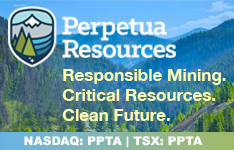The organic food industry is the fastest-growing segment of U.S. agriculture, according to the U.S. Department of Agriculture. But the productivity of the industry is typically "lower than that of comparable 'conventional' farms," wrote Forbes contributor Steven Savage. This is typically called the "organic yield gap."
"The picture that emerges is clear — organic yields are mostly lower," Savage wrote. "To have raised all U.S. crops as organic in 2014 would have required farming of 109 million more acres of land. That is an area equivalent to all the parkland and wildland areas in the lower 48 states or 1.8 times as much as all the urban land in the nation."
According to Bion Environmental Technologies Inc. (BNET:OTCQB), a lack of readily available nitrogen, like the synthetic nitrogen fertilizer used in conventional farming, is a big reason why organic farming produces fewer pounds per acre. Organic crops don’t get that extra "blast" of growth their conventional counterparts get — that's why organic fruit and produce is usually smaller, the company said. It also leads to a higher carbon footprint for organic foods.
Bion's Ammonia Recovery System (ARS) processes and treats livestock waste streams with a focus on discharges from anaerobic digesters. It's at the core of the company's Gen3Tech technology, which produces renewable energy and clean water from livestock waste streams and removes the ammonia, then stabilizes and repurposes it into low-carbon and organic nitrogen fertilizers using only the compounds in the waste stream itself, creating the readily-available organic nitrogen fertilizer that growers need to improve yields.
This summer, Bion announced its "pure" commercial nitrogen fertilizer produced from livestock waste is now OMRI-listed for use in organic production. Bion's ammonium bicarbonate fertilizer is a stable source of nitrogen upcycled from reactive ammonia in organic waste streams in a patented process. OMRI is an international nonprofit organization that lists products allowed for use in organic production under the USDA's National Organic Program.
Interim Chief Executive Officer Craig Scott told Streetwise Reports that the company is in conversations with several large U.S. fertilizer producers about their product and hopes to announce a partnership soon.
Delays, a crisis in management, and financial challenges caused the stock to suffer this year, dropping from US$1.22 in January to US$0.20 on December 3. But Scott said that in addition to the OMRI listing, the ARS at its Fair Oaks demonstration facility in Indiana has been started up and optimized and "exceeded expectations in terms of performance and supporting the economics in our business model." Scott added he believes the final samples and data needed to support a third-party engineering report were taken two weeks ago and they expect the lab results any day.
"Assuming we're able to raise capital to move this forward, the bull****'s behind us," Scott said. "The technology's done, the (OMRI) listing is there, the interest in the fertilizer is there, we just need to raise a little bit of money move forward."
Difficulties 'Behind Us'
In a November 18 update to shareholders, Scott noted, "The conditions that led to the share price decline and difficulties raising capital are behind us. Further, we believe new management has the mindset and experience needed to move Bion out of 'science project' mode and into commercialization."
Technical Analyst Clive Maund wrote on November 25 that the company's future "looks very bright indeed" if it can raise the funds it needs.
Bion said its approach will reduce the carbon footprint associated with organic systems and "significantly reduce nitrogen runoff and off-gassing to protect surface waters, aquifers, and the atmosphere. It can quickly bring soil microbes in organic systems back to a healthy and productive balance and reduce the yield gap of organic crops as compared to conventional."
An organic fertilizer, manure, is traditionally applied to cropland before planting takes place. The volatile ammonia-nitrogen it contains — about 75% of the fertilizer's nitrogen/nutrient value — is usually lost to the environment. But Bion said its patented ARS technology targets this volatile and highly mobile ammonia nitrogen, stabilizes it with carbon dioxide also in the waste stream, and converts it into ammonium bicarbonate, a 100% soluble nitrogen fertilizer that can be readily absorbed by plants.
"The nitrogen fertilizer can now be transported and applied to organic crops," the company said. "It is pathogen free; so, unlike manure, it can be applied at any time in the plant growth cycle through standard drip systems, field irrigation, soil injection, side dressing, and foliar spraying."
The OMRI listing enhances value and transparency for farmers, improves consumer confidence, and reduces Bion’s partners' exposure to claims of greenwashing.
Analyst: Future 'Bright Indeed'
Technical Analyst Clive Maund wrote on November 25 that the company's future "looks very bright indeed" if it can raise the funds it needs.
"The company's technology has been proven up, works, and works well, and with the fast-growing worldwide concern about the effective treatment of farm wastes associated with the climate crisis, the market for this technology borders on in infinite," Maund wrote. "Add to that: the company learned last January that it was granted another patent, extending its IP to industrial and municipal waste streams, in addition to animal waste."
As Scott noted, it creates "a whole new set of markets for us beyond animal waste."
On the stock's six-month chart, Maund wrote that a "pattern that has been forming since early August has taken the form of a bullish Cup & Handle base that promises a probable entry into a new bull market. A breakout from this pattern will be signaled by a clear break above the line of resistance at about US$0.30, marking its upper boundary."
"The long-term 20-year chart shows that this is a good point for Bion to start higher again, as the recent downtrend has brought it down to what is believed to be a cyclical low in a zone of strong support in the vicinity of past lows going back many years," Maund continued, saying it was an "excellent point to buy Bion Environmental or add to positions."
The Catalyst: Desire for Eco-Friendly Food
According to a report from Markets and Markets, the market size for organic fertilizers is valued at US$7.9 billion in 2024 and is estimated to increase at a compound annual growth rate (CAGR) of 11.5% through 2029 to reach US$13.6 billion.
"The rising preference for environmentally conscious food fuels the growth of the organic fertilizers industry," the report said. "This transition underscores a wider dedication to sustainable farming methods and reducing ecological damage."
Governments around the world are responding to this shift by enacting regulations and incentives to encourage organic farming, Markets and Markets said.
"These actions aim to facilitate the transition to organic methods, further boosting the demand for organic fertilizers," the report said.
 Streetwise Ownership Overview*
Streetwise Ownership Overview*
Bion Environmental Technologies Inc. (BNET:OTCQB)
According to a report by Technavio, the global market for biogas is estimated to grow by US$19.51 billion from 2024-2028 at a CAGR of 6.01%.
Europe is way ahead of America when it comes to using the technology to process organic wastes. According to a 2022 report by Waste 360, there were about 17,500 such plants in the European Union in 2016 and less than 350 in the U.S.
Scott noted that it's a resource that's being wasted here. "This is stuff that's already here, and you've got one of two choices: it either goes to atmosphere and becomes pretty nasty air and water pollution, or you capture it and harness it," he said.
In addition to a possible partnership with a fertilizer company, an upcoming catalyst for Bion is the development soon of an engineering report detailing the economics of the company's ARS system.
Ownership and Share Structure
According to Reuters, about 20% of Bion Environmental is owned by management and insiders.
About 1.25% is with Centerpoint Corp. with 0.70 million shares. Less than 1% is held by institutions. The rest is with retail.
Bion has a market cap of US$11.42 million. Trading over the past 52 weeks ranged from US$0.15 per share to US$1.30.
| Want to be the first to know about interesting Agriculture and Technology investment ideas? Sign up to receive the FREE Streetwise Reports' newsletter. | Subscribe |
Important Disclosures:
- Bion Environmental Technologies Inc. has a consulting relationship with Street Smart an affiliate of Streetwise Reports. Street Smart Clients pay a monthly consulting fee between US$8,000 and US$20,000.
- As of the date of this article, officers and/or employees of Streetwise Reports LLC (including members of their household) own securities of Bion Environmental Technologies Inc.
- Steve Sobek wrote this article for Streetwise Reports LLC and provides services to Streetwise Reports as an employee.
- This article does not constitute investment advice and is not a solicitation for any investment. Streetwise Reports does not render general or specific investment advice and the information on Streetwise Reports should not be considered a recommendation to buy or sell any security. Each reader is encouraged to consult with his or her personal financial adviser and perform their own comprehensive investment research. By opening this page, each reader accepts and agrees to Streetwise Reports' terms of use and full legal disclaimer. Streetwise Reports does not endorse or recommend the business, products, services or securities of any company.
For additional disclosures, please click here.










































